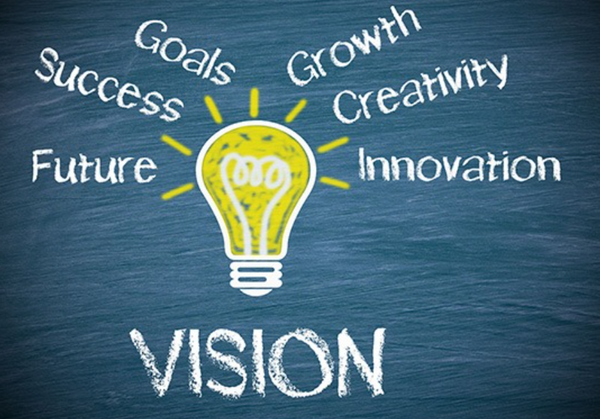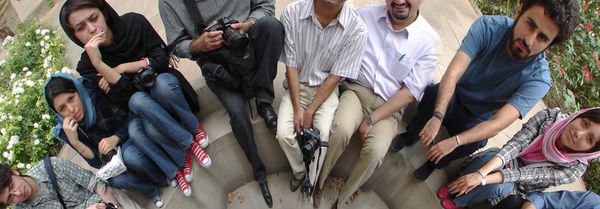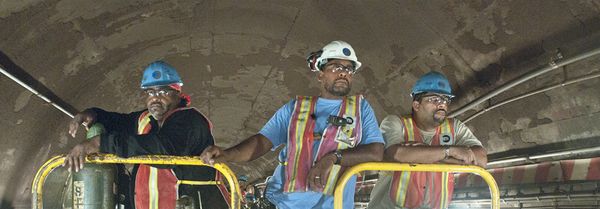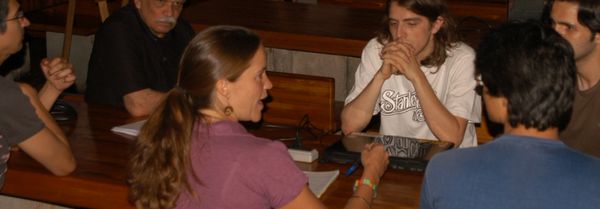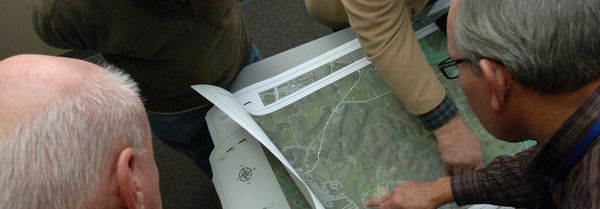Coach
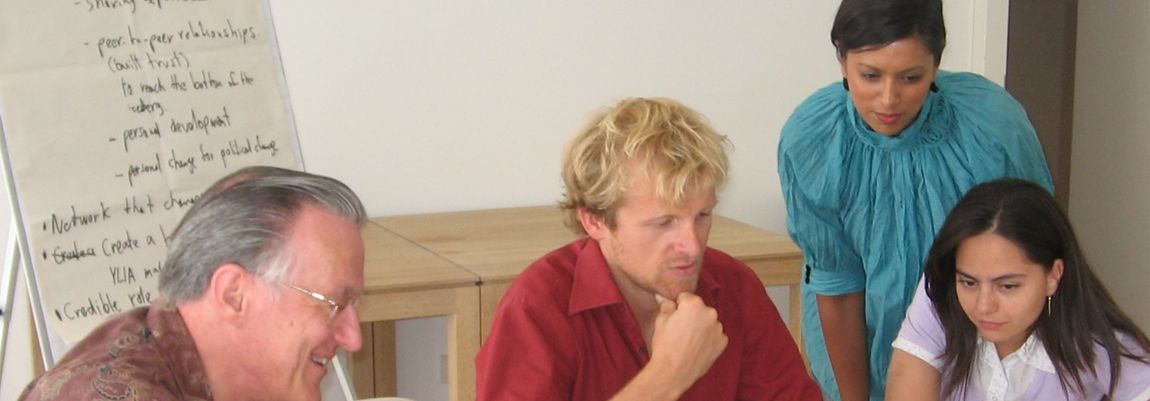
I call the following advice "Coach's Corner"—short bits of key advice for activists and wanna-be's. Some of it comes from Giraffe Heroes— the change agents honored by the Giraffe Heroes Project for sticking their necks out for the common good (these people know what they're doing!) Some of it comes from my fifteen years as a negotiator and problem-solver for the US Foreign Service. Most of it comes from subsequent decades as a citizen activist, and writer, speaker, blogger and coach on the subject of creating change.
#1 — MOTIVATION: HOW TO GET IN THE GAME AND STAY THERE
John Graham
The first in a series of short insights into successful citizen activism by veteran change-maker John Graham
In a long career of helping people get good stuff done in their communities and beyond, I’ve worked out many ways to help activists and wannabees succeed—to see real change happen as a result of their efforts.
One key element is motivation.
Have you ever thought of getting involved in solving a problem you see but then backed off, thinking it would be impossible to make it better? Even if you see a way to succeed, the job could mean nasty people taking potshots at you. That’s stopped a lot of people with good ideas from ever moving into action.
The organization I work with—the Giraffe Heroes Project—honors people who stick their necks out for the common good. These “Giraffe Heroes” are men and women, young and old, from every ethnic and economic background, tackling every kind of public problem you can think of, from climate change to poverty to crimes against women.
Why do they take on the risks of being criticized or simply failing? Some of them risk losing their livelihoods or even their lives. Why?
more#2 —WHICH CHALLENGE HAS YOUR NAME IN IT?
John Graham
Another short insight into successful citizen activism by veteran change-maker John Graham
Some time ago I went back for a reunion to the high school in Tacoma I graduated from. Nearly all my classmates were leading comfortable lives in business or the professions. They talked about their houses and their investments and how well their kids were doing.
But the classmate who most caught my attention was Tom. He’d been the "slow” one in our class, the butt of jokes. But for 30 years he’d been directing a social service agency in the worst area of Tacoma and had just started a controversial needle exchange program. Tom was fascinating. He spoke about his work with addicts with the charisma and energy and peace of mind of a person who had truly found his calling and answered it with everything he had.
Wise people have known for thousands of years that nothing is more important in life than finding personal meaning in what we do, something in sync with our deepest priorities and ideals. We all want to look at the image in the mirror in the morning and know that we're not on the planet just to take up space.
Like Tom, like many others, I've found the surest path to this meaning is service, is helping make life better for other people. If you find a way to serve, you’ll find a path to meaning that will bring joy to the deepest part of you. And you'll help solve the problems that you care about.
more#3 — HOW TO LAUNCH AN INITIATIVE FOR CHANGE
John Graham
Another short insight into successful citizen activism by veteran change-maker John Graham
It’s not just the national and global impacts of issues like Covid, global warming, racism, inequality and a rotten political system—that demand our attention these days. It’s the local impacts of these huge issues that often most affects the quality of our daily lives. How do we cut carbon emissions where we live? How do we counter the misinformation from anti-vaxxers waving signs in our faces—or deal with our city’s homeless—or with racist elements present in our local police forces and zoning boards? What do we teach the kids in our schools? How do we counter local white supremacists? And on and on…
I understand the fatigue that sets in when you even think about the whole agenda large and small. But to me there’s no choice but to get involved. How many times do we have to learn that if we take our eyes off the balls, we pay the price.
The short tips below are mostly aimed at your local scene, but relevant to the larger ones as well.
But you can’t do it all.
So start with a problem you care enough about to get involved and where you think
more#4 —HOW TO CREATE A FOCUSED, DO-ABLE PROJECT
Another short insight into successful citizen activism by veteran change-maker John Graham
OK, there’s a public problem that really concerns you. Maybe it’s the climate crisis or police violence. Or something else.
Concerns like these are so huge, you can feel stymied, unable to make a move beyond just venting on social media.
No need for that. There’s a path forward, and it’s to create a do-able project that will actually help solve the problem that’s keeping you up at night. Do-able as in, it can be pulled off in the time you have, with resources you’ve got or can get.
But first, remember the difference between problems and projects.
Naming the problem points you in the right direction and generates energy behind your cause, both in you and in the people whose support you need.
Creating a specific project takes you the next step, focusing that energy on practical initiatives that can make a real difference. Voicing a problem creates passion. Creating a project builds the vision, goals, strategies, timelines, and budgets needed to make headway against the problem.
A do-able project to address the climate crisis might be, “Getting my city to install an all-electric bus fleet.” For police violence it might be, “Electing a new mayor who’s committed to police oversight reforms.”
more#5—THE IMPORTANCE OF VISION
John Graham
Another insight into successful citizen activism by veteran change-maker John Graham (Coach’s Corner #5)
When I was a sixth grader in Tacoma, Washington, waiting my turn at Travoni’s barber shop, I happened to pick up a magazine with a cover story about a place called Harvard. It was described as the best university in America. In the pictures, cool, confident young men were walking across Harvard Yard, obviously heading for lives of fame, money and power.
At that time in my life I was gawky, nerdy and terrified of speaking to girls. I was angry at the bullies who pushed me around and ashamed of how weak and inconsequential I obviously was. No one in my family had ever gone out of state to college. But going to Harvard, I saw, could make me one of those cool, self-assured young men. Looking up through the fog of early adolescence, I wanted to be powerful. I wanted to get to the top of the world, and Harvard, I thought, would take me there.
By the time I’d pedaled home after the haircut, my picture of me at Harvard had burned itself into my soul. For the next six years I made every move I could to make that picture real. I transferred myself into the only local school that was hard enough to get me high scores on the entrance exams. I rarely looked up from my books—nothing happening around me was as important as where I was headed. That kid who was me worked so hard, he got a National Merit Scholarship, thus solving the problem of how my not-rich family was going to pay for an Ivy League education.
more#6—PICTURE SUCCESS!
John Graham
Because if your project’s vision for success isn’t powerful enough, it will be dead in the water.
Another insight into successful citizen activism by veteran change-maker John Graham (Coach’s Corner #6)
OK, there’s a public problem that’s really bugging you and you’re ready to put some real energy, time and resources into helping fix it. Maybe it’s the climate crisis or the curricula in your kid’s school or getting your candidate into office. Or something else.
So you swing into action!
Whoa! Not so fast.
If I’ve learned anything in four decades of coaching political activists, it’s that launching a project without a clear vision of its success is a prescription for failure. It’s like stepping on the gas without putting your hands on the wheel.
By “vision” I’m not talking about some idle wish or hope—but a clear, strong, detailed picture of a result that doesn’t yet exist. I’m talking about seeing the real fruits of the real efforts you’re about to launch, a vision that comes from the future and informs and energizes the present.
Visioning is the most powerful tool I’ve ever found for turning a good idea into a reality.
more#7 — Trust THEM? Are You Kidding?
John Graham
(Another insight into successful citizen activism by veteran change-maker John Graham)
Unless you’re Donald Trump or Ebeneezer Scrooge you gotta be happy that President Biden got his bipartisan infrastructure bill passed and that America will finally fix a decades-long backlog of repairs and upgrades.
But that infrastructure bill, in today’s super-polarized world, was the exception. Even though its benefits are hugely popular in red states and blue, there were still weeks of petty foot-dragging before House leaders finally dragged it through.
It wasn’t politics that almost killed the bill—it was the breakdown in fundamental levels of trust—trust that progressives and moderates would each do what they said they would, and that in the end enough Members would put the common good over personal preference and ambition.
They finally did, but watching the House almost turn this slamdunk into a disaster demonstrated to the entire country just how dysfunctional this nation’s politics have become.
If Congress also passes a version of President Biden’s Build Back Better legislation later this year it will be without a single Republican vote. And there is no voting rights legislation in sight, no immigration bill, and no national policies on police reform, a living minimum wage, or relief for crippling student debt. No serious effort to narrow the toxic gap between rich and poor and probably no change in America’s status as one of the two countries on the planet without paid family leave.
more#8 — How to Build Trust (The Role of Caring)
Coach’s Corner #7 made the point that successful citizen activism often depends on individual people and/or small groups sticking their necks out to trust when no one else seems ready to take that risk. But how do you do that, especially if the people you’re up against are difficult?
Competence builds trust because it sets a standard. Both your allies and your opponents recognize your skills and experience; this makes miscalculations by any of them less likely and encourages straight talk. It also strengthens support for you from members of your own team. If they know how good you are at negotiating, for example, they’ll be much more likely to trust you to take the lead at the bargaining table.
Accountability and honesty build trust; people know not only that you can do your job, but also that you will do it—and that you will tell the truth and keep your word.
Respect builds trust. Valuing other people’s priorities, needs, backgrounds, outlooks, and styles helps them trust you, especially if they hold views that are very different from your own.
From my experience, however—the most powerful tool for building trust is caring for other people and for their situations. By “caring,” I don’t mean some abstraction. Real caring is active—it goes past good thoughts to good actions, even when you’re under stress. I apologize for talking to you about what caring is—as if you didn’t know that from your mother’s knee. But I’m more than willing to embarrass myself because of the countless times I’ve seen citizen activists ignore the value of these simple steps.
more#9 — How to Build a Team
Most of the public problems that cry for solutions today are complex and time-consuming. While change efforts are usually started by one or a few motivated people, long-term progress usually requires more than that. And it isn’t just the additional help that’s important. Given the power of the forces any citizen activist may confront, it’s simply too easy for one person to be marginalized. If you’re pursuing a cause by yourself, sooner or later those opposed to change are going to ask, if this is so important, why is she the only one making noise? Why don’t we just ignore him?
But simply collecting a large number of willing people isn’t enough. The work these people do has to be focused and coordinated. There has to be a team.
A team is more than a group of people sharing a common goal and working together to achieve it. A good team is an effective structure for planning, making decisions, coordinating efforts, and bringing power to bear. A good team is synergistic---members motivate each other, build on each other’s strengths and compensate for weaknesses, share the heavy lifting, and cross-fertilizeideas.
Teams can be parts of larger groups, such as the committees of an organization or association, or they can be formed from scratch, to carry out new projects. Many of the functions and attributes of a team are also important for official or semiofficial bodies, such as planning commissions or citizens’ advisory groups.
more#10 — Team Structure
Nobody wants more structure on a team than is necessary. If overdone, it stifles both energy and creativity. But the need for structure grows with the size and complexity of the work. It’s crucial, early on, for the team to reach agreement on the five elements listed below:
• choosing leadership
• internal communications
• external communications
• decision making
• record keeping
The agreement doesn’t have to be signed in blood, but it should be formally written down in some form of minutes or bylaws that all agree to. Notto address these elements invites conflict, inefficiencies, and chaos.
Choosing Leadership. The question of whowill lead the team is important. Even more important, however, is the formof leadership the team needs and wants,
The key concern any team must address head-on and early is how much authority it’s comfortable giving to its leader.Will the leader’s roles and responsibilities be limited to calling and chairing meetings? Or does it make sense in your team’s situation to give the leader broader powers to make decisions and to represent the entire team to others?
However much formal authority the team decides to give its leader, my experience is that it’s important to allow the leader reasonable flexibility. In a crisis or other fast-breaking event, you should want your leader to have more authority to make decisions than in less stressed times--there simply may not be time to talk through all the options with the whole team. So the leader needs to be someone the team trusts to use and not abuse this privilege.
more#11 — How to Manage a Team (Part I)
The most important and most difficult aspect of managing a team is dealing with the people on it.
Focus first on relationships. How people get along can be crucial to the success of any team effort, especially if the task you’ve taken on includes stress-producing conflicts or obstacles. The minimum goal is to create working relationships good enough to promote open discussion and ready cooperation.
If all the members of your group don’t know each other at the outset, spend whatever time it takes at the first meeting—or set aside a special time—for everyone to get acquainted. Suggest that people share not just the usual biographical information but also the reasons why they’re there, and whatever expectations, concerns, and questions they may have. As the project goes on, regularly schedule “people” time---pizza out, a ball game, a potluck with the kids, a celebration for a job well done---anything that brings team members together in an atmosphere that’s informal and relaxed. If you’ve got the time and resources, a team retreat can help deepen connections.
Trust. It’s important that members be as comfortable with each other as possible. But it’s even more important that they trusteach other to contribute to the work of the team. Coach’s Corner #7 focused on building trust with opponents or potential opponents. It’s also vital to build trust among the people on your side. Mutual trust keeps a team motivated and moving forward. It improves coordination and communication. It makes the work more fun. It helps the team weather obstacles and disappointments.
more#12 — How to Manage a Team (Part II)
On a team, match the right people with the right tasks. What people volunteer to do will often be a good guide, although of course it’s also important to make sure that each person has the skills and experience needed to do the job. Matching new people with more experienced people on the team both ensures the quality of the work and provides on-the-job training.
It’s useful for team members early on to talk to the whole team about what they see as their primary strengths and interests. This not only helps guide the distribution of tasks, but it also makes each person feel valued, it will prompt shy members to contribute, and it will help the more compulsive members to relax, knowing that they don’t have to know or do everything.
If you’re leading a team, try to rotate the toughest and most time-consuming jobs within the group to give people breathers when they need them. Also, delegate authority to others as much as you can. Delegating not only takes some of the load off the leader, but it also builds teamwork: when people know they’re integral to the action, their commitment to the enterprise and to the team grows.
Delegate authority only when it’s clear that the person you’re delegating to has the necessary skills and commitment. Don’t ask the most tongue-tied member of your team, for example, to sub for you in giving a speech to the city council.
more#13 — Making a Plan (Part I)
This essay and the next are addressed to a team of activists. The information here, however, works equally well if you are on your own.
I’m assuming that you’ve identified a problem and created a project. You’ve formed a vision of the results you want. Now what?
Visions are about what you want. What’s still missing is how to get it. A vision that remains only a concept can do more harm than good, by raising expectations that will never be fulfilled. This essay and the next are about making a vision real by creating a plan for its fulfillment and putting that plan into action.
A good plan, effectively carried out, will keep your team organized and focused, help it make the most of its time and energy, and definitely improve its odds of getting the results it wants. A good plan will also give your team standards it can use to evaluate results—to see where it succeeded and where it didn’t, what it could have done better, and what it didn’t need to do at all. This kind of analysis will make your team that much better prepared for its next project.
I call the planning method described below visionary planning because everything in it is tied to the overall vision of success you’ve created for your project. That link allows the power of the team’s vision to inspire all its members, and the clarity of the team’s vision to guide them, every step of the way.
more#14 — Making a Plan (Part II)
Budgets. If your project requires money, then the funding goal in your action plan must be based on a budget, as in estimated expenses matched against estimated sources of cash income. Here’s a stunner: unless you’re the federal government, the cash income must equal or exceed the expenses. A budget should also list items given to you (in-kind contributions).
All foundations and many major donors will ask to see a budget before they write you a check, so be thoughtful in developing one. Make sure that all cost and revenue items are included, and that you can justify the type and amount of each. Be impeccable in handling the project’s money (see “Record Keeping” in Coach’s Corner #10)
Prepare to be surprised. Don’t wait until the problems or crises find you!
Keep your positive attitude and vision, but spend enough time anticipating what might go wrong and then figure out what you might do to prevent it, or to cope with it if it can’t be prevented. Keep these contingency plans handy, so that they’re within reach when you need them.Be just as prepared to welcome the goodbreaks, and to expand your goals and vision in ways you could not possibly have envisaged when you started.
more#15 — Risktaking and Courage
Sticking your neck out as an active citizen is no video game---if things get tough, you can’t just press the reset button and start over. Taking a risk for the common good always means daring to act in the face of the unknown and always includes the possibility of hurt or loss. Reactions from peers can be cruel, and conflicts with people who like things the way they are can get nasty, especially if those people are in positions of authority. The risks that come with standing up for what you believe in are real. They can include:
• standing up for an unpopular idea when others are telling you to sit down and shut up, and when you could lose friends and the support of people important to you;
• speaking out in public, especially if you’re not experienced;
• failing, especially in public, where you could be embarrassed or ridiculed, and where your reputation could suffer;
• going up against difficult and angry opponents;
• spending time and money you don’t have;
• getting no response or a negative one when you reach out to someone;
• being the target of retribution for blowing the whistle on inept or illegal practices in business or government.
more#16 — Tips for Taking Risks as an Active Citizen
There are smart ways and not-so-smart ways to take risks. Smart is better.
Lower the Risks by Getting Better Information about Them
You may find out that some perceived risks aren’t risks at all, or are less significant than you first thought. People were afraid of eclipses when they thought eclipses were caused by an angry god. The risks disappeared when people learned that eclipses were predictable effects of the orbits of the moon, sun, and earth. You can improve your knowledge of the risks you see by questioning people more familiar with the situation than you are, and by doing research in books, newspapers, and magazines, and on the Internet.
What’s Your Experience? Have you ever been in a situation in which the risks you first perceived disappeared in the light of new information---for example, someone you thought was an opponent wasn’t?
On the other hand, if you increase your knowledge and find that the risks are real, the things you’ve learned can help you prepare to take those risks.
Many people tend to exaggerate the real risks they face, either because they haven’t had much practice at taking risks or because they’ve got too many memories of risks that failed. It’s also easy to load a real risk with lots of other emotional baggage that’s just not relevant to the here and now. If you were cowed by your first-grade teacher or your drill sergeant 30 years ago, that experience could be adding to whatever uneasiness you may feel in speaking your mind to your boss, or to the mayor or the leader of the opposition.
more#17 — Finding Common Ground: Negotiating and Resolving Conflicts (Part I)
Finding common ground with other people does not mean finding absolute agreement. Common ground is shareable ground whose boundaries are marked by a range of actions that all can live with. You and your neighbor may not vote for the same political candidate, for example, but your shared belief in elections, free speech, and the democratic process is common ground.
Negotiating is a rational process for resolving differences and for finding common ground. It’s not just what diplomats and labor and management leaders do---all of us do it all the time. We negotiate with our spouses over what color to paint the kitchen or where to go on vacation. We negotiate with the phone company over a bill we don’t agree with. We negotiate with our employers to get a raise. We negotiate with our teenagers over curfews and car keys.
Active citizens negotiate within their own groups over strategies and priorities; with government officials over policies and funding; and with other citizens, who may not understand or agree with what they want to do.
When negotiations are done well, they can bring people together instead of pushing them apart. They can lead to solutions that are smarter and fairer than either side may have originally proposed. They can even be fun.
more#18 — Finding Common Ground (Part II)
In Coach’s Corner #17 we began looking at some general principles for negotiating and resolving conflicts, including:
1. Winning at the Expense of Others Is a Poor Solution
2. Look below the Waterline.
Next up:
3.You’re in Charge of Your Emotions, No Matter What the Provocation
An out-of-control reaction increases your provokers’ control over you---and may cause a similar response in them, sending all of you over the edge.
I’m not suggesting you become emotionally dead. Showing your human side---joy, sadness, excitement---can be crucial to sustaining the personal intensity you need when things get tough. And by showing your humanity, you invite others to respond in kind, creating the connections that will help you both reach for common ground. My experience is that the air of “professional detachment” that many lawyers and consultants adopt often prevents this from happening.
It’s letting fly with negative emotions, such as anger and frustration, that creates trouble. From my experience, when negotiations slide into conflicts and people get stuck there, often it’s not because they’re too dumb to figure out solutions, but rather because they can’t or won’t deal with their anger and frustration well enough to work things out. That’s true everywhere, from the Balkans to our own backyards.
more#19 Finding Common Ground: Negotiating and Resolving Conflicts (Part III)
In Coach’s Corner #17 and #18, we discussed these general principles:
1. Winning at the Expense of Others Is a Poor Solution
2. Look below the Waterline.
3. Building Trust Is Often the Key to Success
Next up:
4.You’re in Charge of Your Emotions, No Matter What the Provocation
An out-of-control reaction increases your provokers’ control over you---and may cause a similar response in them, sending all of you over the edge.
I’m not suggesting you become emotionally dead. Showing your human side---joy, sadness, excitement---can be crucial to sustaining the personal intensity you need when things get tough. And by showing your humanity, you invite others to respond in kind, creating the connections that will help you both reach for common ground. My experience is that the air of “professional detachment” that many lawyers and consultants adopt often prevents this from happening.
It’s letting fly with negative emotions, such as anger and frustration, that creates trouble. From my experience, when negotiations slide into conflicts and people get stuck there, often it’s not because they’re too dumb to figure out solutions, but rather because they can’t or won’t deal with their anger and frustration well enough to work things out. That’s true everywhere, from the Balkans to our own backyards.
more





